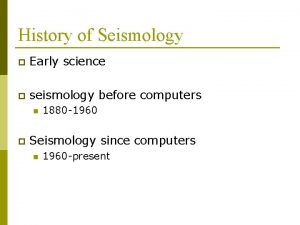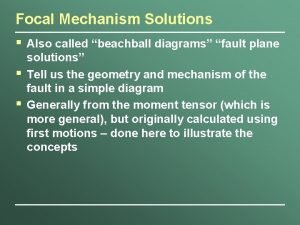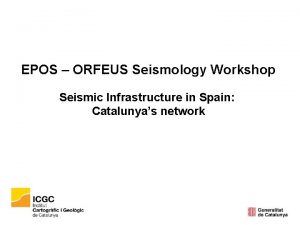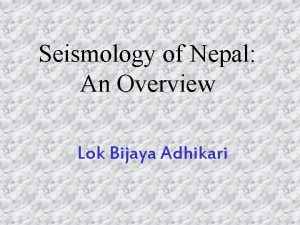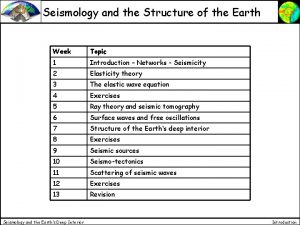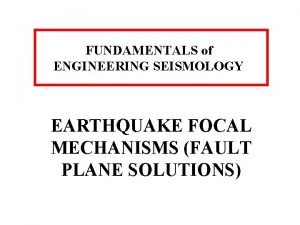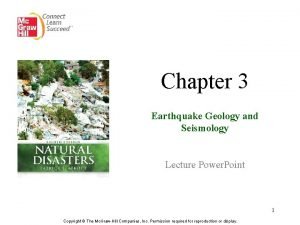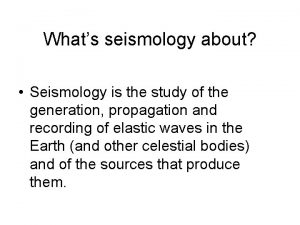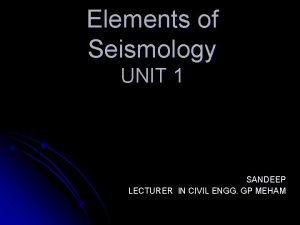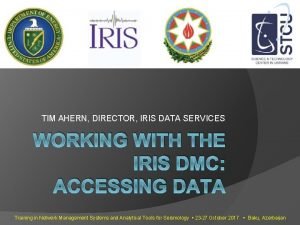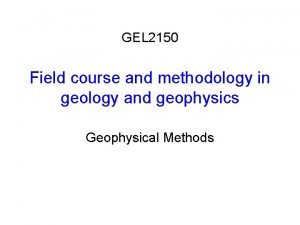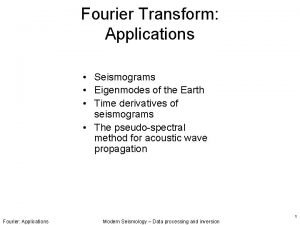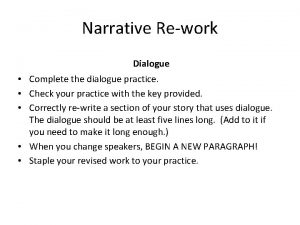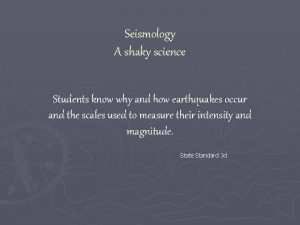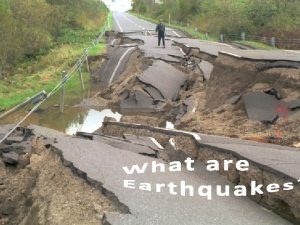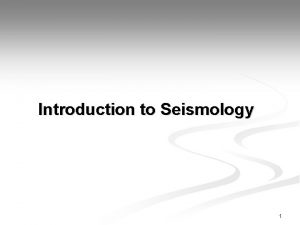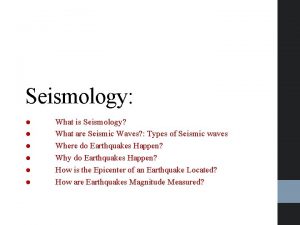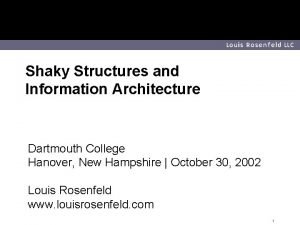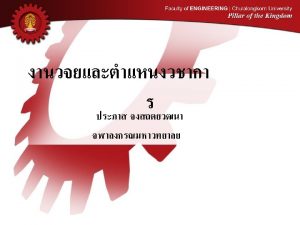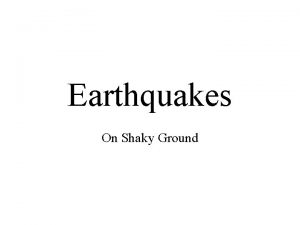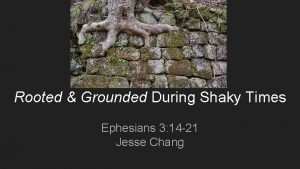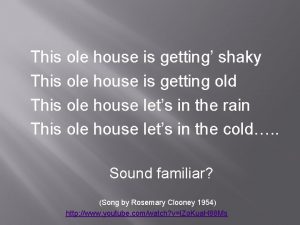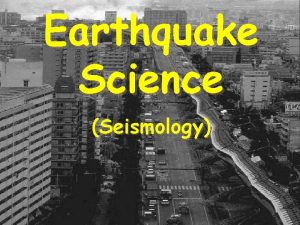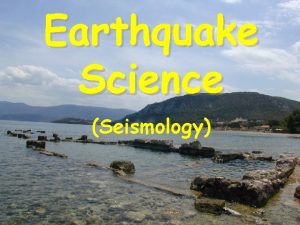Seismology A shaky science Students know why and

























- Slides: 25

Seismology A shaky science Students know why and how earthquakes occur and the scales used to measure their intensity and magnitude. State Standard 3 d

Chapter 12 What are earthquakes? The Earth’s crust is always moving as a result of its internal heat engine. This movement may or may not be detected. These movements are called tremors. Strong sudden motions of the earth’s crust are called earthquakes. Earthquake- Sudden shaking or trembling of the Earth’s solid crust. What's Shakin'? ► Earthquakes, also called temblors, can be so tremendously destructive, it’s hard to imagine they occur by the thousands every day around the world, usually in the form of small tremors.

Chapter 5 -7 What causes earthquakes? Elastic Rebound Theory- Theory which explains how the Earth’s crust bends breaks and attempts to return to its original position. ► The elastic rebound theory of an earthquake source explains how rock masses are strained in opposite directions on each side of the rupturing fault as the fault rupture progresses along the fault takes place in an attempt to reach equilibrium. ► In the rupture, the rock masses spring back to a position where the elastic strain is less. ► This movement at any point may not take place at once but rather in irregular steps. ► These sudden stoppings and startings give rise to the vibrations that propagate as seismic waves.

Chapter 12 What are earthquakes Where do earthquakes start? Deep inside the Earth’s crust. ► Focus-(Hypocenter) Point beneath the Earth’s surface where an earthquake originates. ► Epicenter - Point on the Earth’s surface directly above the focus.

Chapter 12 What are earthquakes Most earthquakes start along cracks or fractures called faults. Fault- crack or facture in the earth’s crust. Where Can Earthquakes Occur? ► Earthquakes can actually occur anywhere, but are more likely to happen near two fault boundaries where it is likely two plates will meet.

Can we feel this movement? As movement takes place along this crack or fracture, energy is released in the form of seismic waves. These waves are picked up by a sensitive device called a seismograph. Seismograph- Instrument that measures and records the energy released by an earthquake.

Ch. 12 Seismic Waves Seismic waves have differences; Primary Waves- First and fastest wave released by and earthquake. Characteristics; Travels like a sound wave, travels through both solids, liquids and gases, Wave velocity 5 km/sec.

Ch. 12 Seismic Waves Secondary Waves (S-waves)- second wave released by an earthquake. Characteristics; Travels like waves in a rope, Wave velocity 3. 5 km/sec, travels through solids only.

Ch. 12 Seismic Waves Lag Waves (surface waves, L-waves)- waves that travel along the surface of the Earth. Characteristics; They are the last waves to be recorded, wave velocity 3 km/sec, they travel through solids, they move across the earth’s surface like ripples on a pond, they are the most damaging waves.

Studying Earthquake Waves Seismologist study seismograms and can tell a great deal about earthquakes. It can indicate how far way the epicenter is from the seismic station and the energy released by the earthquake. Magnitude- the amount of energy released by an earthquake. Arrival time- the time it takes for seismic waves to arrive at a seismic station. Lag time- the differences in arrival time between the P-wave and S-wave.

Finding the Earthquakes Epicenter Using the differences in arrival time between the P-S wave (S-P interval), scientist can calculate the distance to the epicenter. Locating the epicenter- you will need three different seismic stations to locate the exact position of the epicenter. We call this triangulation;

Finding an earthquake epicenter ► Reading tables

Chapter 12 How do earthquakes cause damage? ► Richter Scale- scale that measures the energy released by an earthquake. ► Magnitude- The amount of energy released by an earthquake. § Scale developed in 1935 by geologist Charles Richter which measures the magnitude or energy released by an earthquake. § The Richter magnitude scale, or more correctly local magnitude ML scale, assigns a single number to quantify the amount of seismic energy released by an earthquake. It is a base-10 logarithmic scale obtained by calculating the logarithm of the combined horizontal amplitude of the largest displacement from zero on a seismometer output. Measurements have no limits and can be either positive or negative. The energy released is also logarithmic, but the base is approximately 32. Thus a two unit increase on the Richter scale corresponds to over 1000 (≈322) times an increase in released energy.

Richter Scale ► For larger earthquakes a more accurate measurement of size is the moment magnitude. The moment magnitude is a measure of the amount of strain energy released by the earthquake as determined by measurements of the shear strength of the rock and the area of the rupture surface that slipped during the earthquake.

Mercalli Scale ► Mercalli Scale- attempts to measure the intensity of an earthquake. (I-XII) ► Intensity- the amount of damage caused by an earthquake.

Tsunamis ► Tsunami- seismically generated sea wave. ► Tsunami’s are powerful sea waves that are created when epicenters are located on the oceans seafloor. ► A Tsunami’s height increase as water depth decrease. Tsunami’s get larger closer to shore.

Killer Waves Hey where did all the water go? Check out the white line on the horizon. Puhket, Thailand.

Killer Waves Not real, but possible; heights can exceed 50 meters and travel at speeds of 725 Km/hr.

Predicting Earthquakes ► Can seismologist predict when the ground will move? ► An earthquake prediction is a prediction that an earthquake in a specific magnitude range will occur in a specific region and time window. § Not with any precision; time, dates, locations or magnitude not yet. § Scientist use past earthquakes and data to help predict future earthquakes. ► Animal behavior, stress analysis, sound waves, weather patterns, fluctuating water levels, psychic phenomena, Tidal forces, astronomical phenomena, etc. ►Monitoring earthquake movements can be helpful in accessing risk. ►If we could predict earthquakes, what would you do?

Pacific Seismic Ring

Fault Types Normal Fault- When one block of the Earth’s crust moves upwards relative to the opposing block.

Reverse Fault ► Reverse Fault- When a block of the Earth’s crust moves downwards relative to the opposing block. Over hang

Horst and Graben Fault Horst and Graben- When two blocks of the Earth move upwards relative to the middle block which moves downward.

Fault Types Thrust Fault- When one block of the earth moves up and over the opposing block.

Fault Types Lateral Fault- (strike-slip) Block of the Earth’s crust that moves to the right or left of the opposing block.
 Hey hey bye bye
Hey hey bye bye Seismology timeline
Seismology timeline Focal mechanism beach ball
Focal mechanism beach ball Orfeus seismology
Orfeus seismology Seismology nepal
Seismology nepal Seismology
Seismology Focal point engineering
Focal point engineering Two types of body waves
Two types of body waves Whats seismology
Whats seismology Elements of seismology
Elements of seismology Seismology
Seismology Gel geophysics
Gel geophysics Seismology
Seismology Know history know self
Know history know self Dilan gorur
Dilan gorur He is a friend of mine the god of angel armies
He is a friend of mine the god of angel armies What is my favourite subject
What is my favourite subject Tragedy of the commons
Tragedy of the commons Miguel morayta rizal
Miguel morayta rizal Dont ask
Dont ask 3 sides of the health triangle
3 sides of the health triangle Structure of merchant of venice
Structure of merchant of venice Curious little boy
Curious little boy Hooray cheered gilda. does that mean we can stay
Hooray cheered gilda. does that mean we can stay It is the market form of imported meat
It is the market form of imported meat Know you why
Know you why

